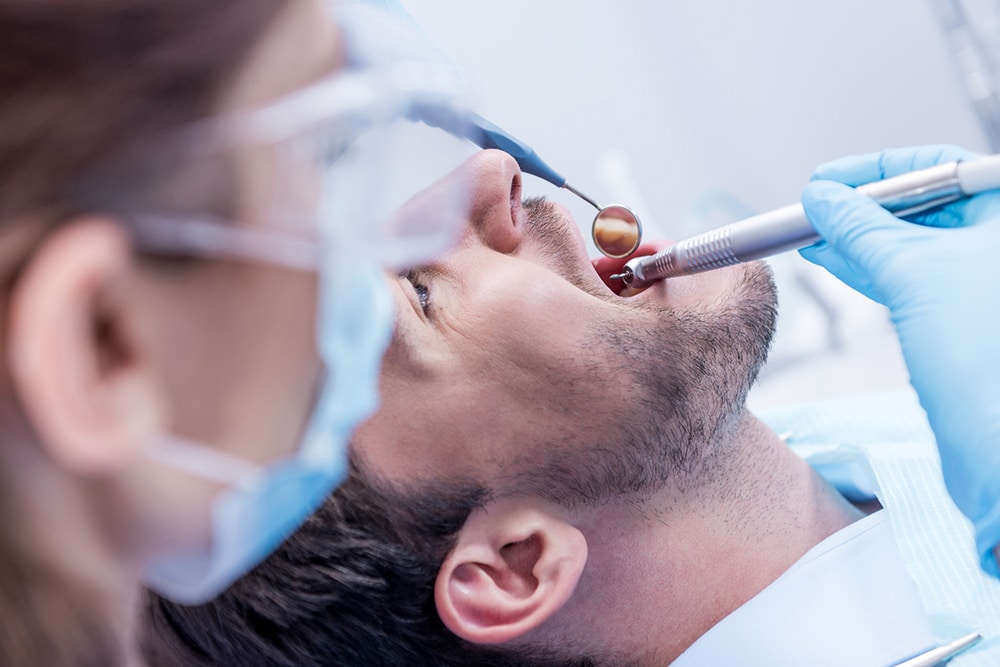Dental cleanings are the removal of plaque, calculus and stains from the tooth structures. They are intended to remove irritants from the teeth. Regular cleanings help keep gums healthy and teeth cavity-free. A dental cleaning includes removal of calculus, plaque and having the teeth polished to remove stains and further buildups of plaque that are not removed when regular tooth brushing is performed.
Dental Services at Our Clinic
Why Choose Shady Grove Dental Care for Your Family Dental Needs?
When it comes to your family’s oral health, you deserve the best. Here’s why Shady Grove Dental Care stands out as a premier choice for family dental care:
- Comprehensive Family Dental Services: Our wide range of services ensures that every family member receives the specific care they need. From routine check-ups and cleanings to more advanced procedures, we’ve got you covered.
- Experienced and Caring Team: Our experienced team of dentists, hygienists, and support staff is bi-lingual and dedicated to creating a comfortable and friendly environment for your family. We understand the unique needs of patients of all ages and tailor our approach accordingly.
- Focus on Preventive Care: At Shady Grove Dental Care, we believe in the power of preventive care. Regular check-ups and cleanings are essential to maintaining optimal oral health for your entire family. Our proactive approach helps prevent dental issues before they become more serious and costly.
- State-of-the-Art Technology: We stay up-to-date with the latest advancements in dental technology to provide accurate diagnoses and efficient treatments. Our modern equipment enhances the overall experience and outcomes for our patients.
- Personalized Treatment Plans: We understand that each family member has their own unique dental needs and goals. That’s why we create personalized treatment plans that address specific concerns and promote lasting oral health.
- Comfortable and Relaxing Atmosphere: Dental visits can be intimidating, especially for young children. Our office is designed to be a warm and welcoming space, helping to alleviate any anxiety associated with dental care.
Our Family Dental Services
Preventative
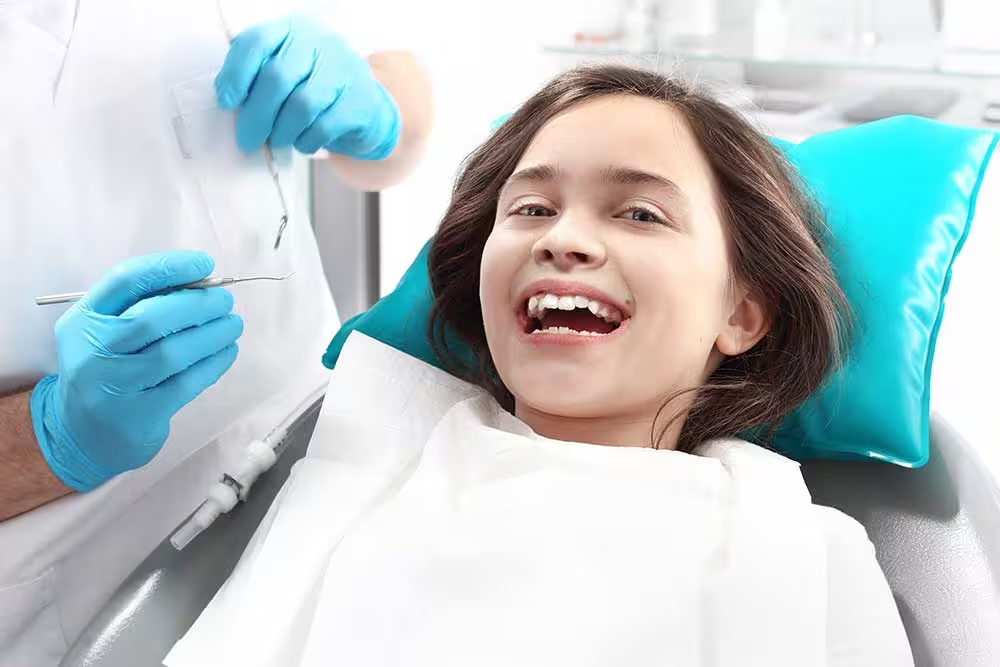
Fluoride Treatment
Fluoride is a mineral that is found naturally in water and many foods. Fluoride builds up teeth’s strength against the acids that cause cavities and tooth decay. The ADA (American Dental Association) encourages fluoride treatment, stating that professional fluoride treatments are beneficial and are best utilized as part of a comprehensive preventive program in the dental home.

Oral Hygiene Evaluation
An oral hygiene evaluation is the patient assessment that may include gathering of information through interview, observation, examination, and use of specific tests and X-rays that allows the dentist to diagnose existing conditions.
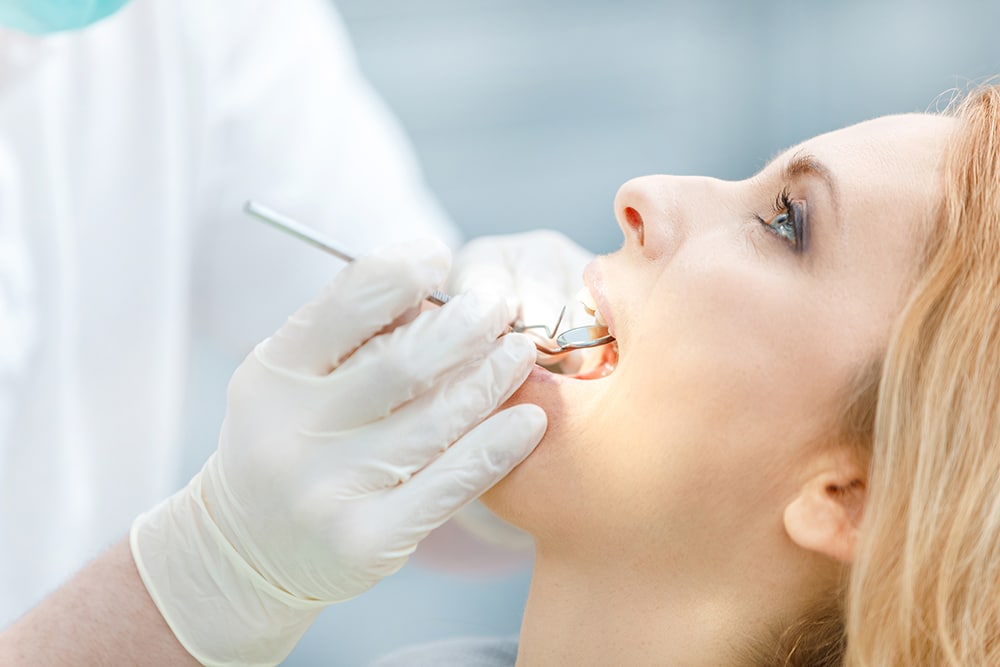
Dental Sealants
Dental sealants are a safe resin material applied to the surfaces of teeth (commonly permanent molars) to prevent cavities. Sealants fill in the crevices of a tooth and “seal” off the tooth from cavity causing agents like food and plaque. The teeth are prepped for the sealant application and the sealant is painted directly on the chewing surface of the teeth and then hardens. Sealants are applied in one visit.
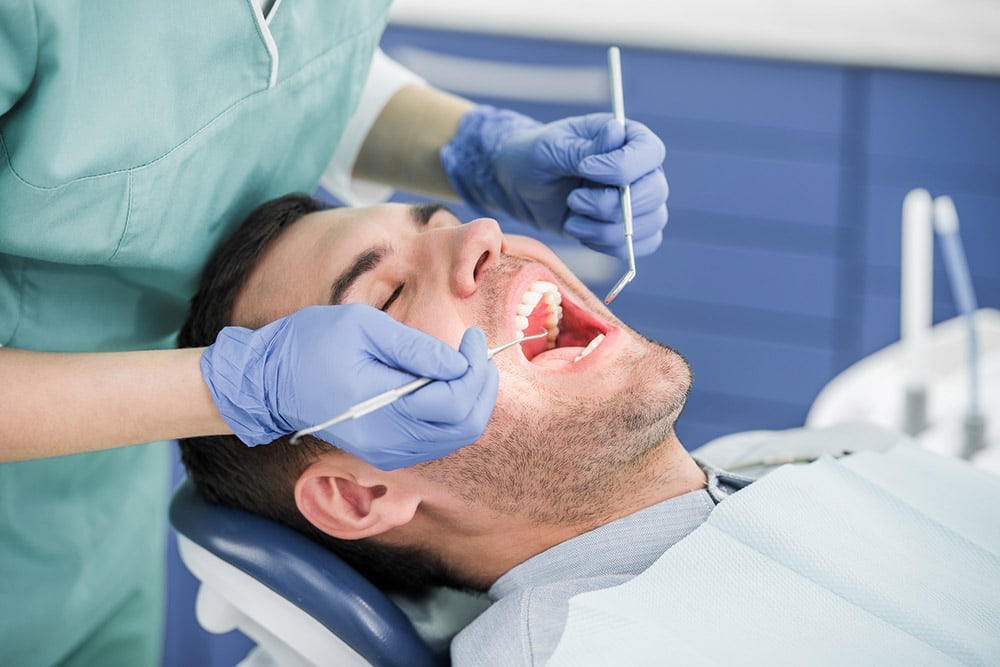
Oral Cancer Screening
Oral cancer affects thousands of Americans yearly. We use the latest technology to detect changes in oral tissue consistencies and/or lesions. A UV light is shined into the mouth to detect unhealthy tissue. Healthy tissue looks lighter under the light while spots of bad tissue appear dark. With early detection, cancer may be caught before it has time to spread, potentially saving lives.
An oral hygiene evaluation is the patient assessment that may include gathering of information through interview, observation, examination, and use of specific tests and X-rays that allows the dentist to diagnose existing conditions.
Diagnostic
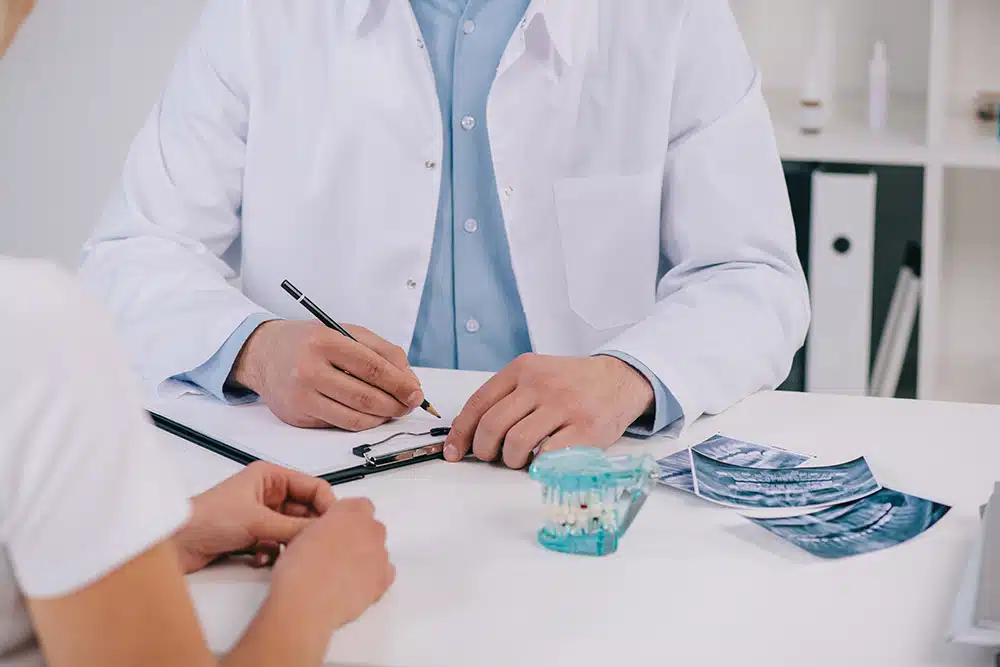
Comprehensive Oral Evaluation
An oral evaluation is recommended every six (6) months to prevent cavities and other dental problems. During an oral evaluation a thorough examination is done to check the hard and soft tissues of the mouth.
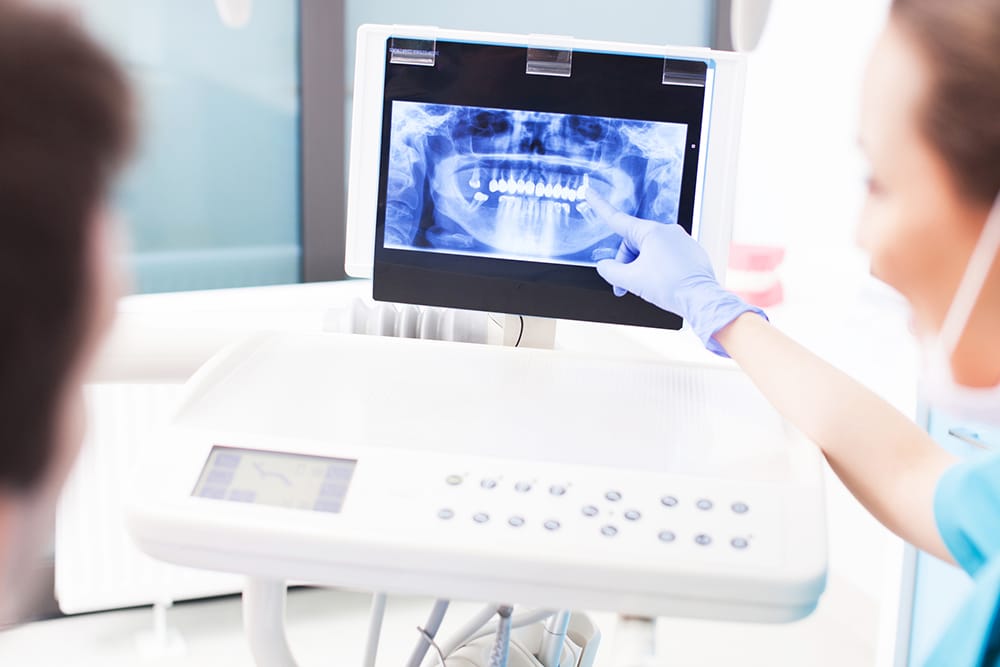
Dental Radiographs (x-rays)
An Xray is an image or picture produced on a radiation sensitive film, phosphorous plate, emulsion or digital sensor by exposure to ionizing radiation. Dental X-rays are a valuable diagnostic tool used to identify decay, extra teeth, bone defects, tumors, cysts and check the progress of previous procedures. Latest technology now allow for digital X-rays, which reduce radiation exposure more than 50 percent, and produce instant, high-quality images that can be viewed immediately by the dentist and the patient.
Restorative
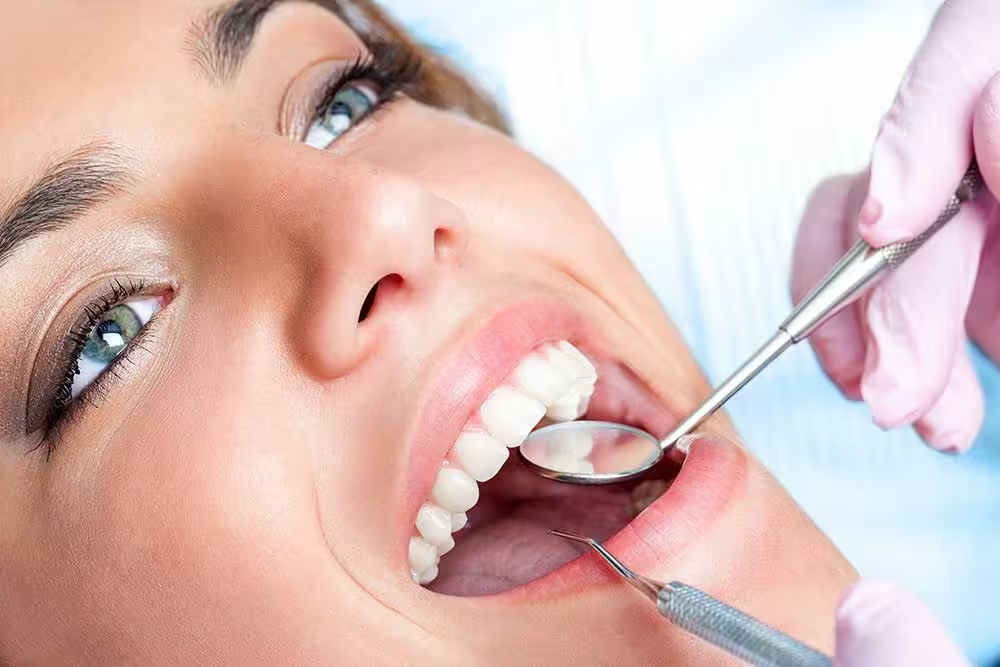
Composite (white) Fillings
After cavities are cleaned, a composite filling is used to “patch up” the cavity that bacteria leave behind when they infect the tooth. Composite fillings are safe and shaded to match the color of the tooth.

Dental Crowns
A dental crown is an artificial replacement that restores missing tooth structure by surrounding the remaining coronal tooth structure after the decay is removed from the tooth. Crowns are necessary when the tooth is broken down to the point where a filling won’t be effective. In order to effectively place a crown, tooth structure may be taken away to help create an esthetically pleasing fit.

Bridge
A bridge replaces missing teeth without the use of a denture or dental implant. A false tooth is held in place by being attached to a neighboring tooth. In order to fabricate a bridge, crowns are made for the teeth on either side of the space and a false tooth is placed in between the crowns, as a support.

Implant Restorations
Dental implants are the replacement of tooth roots in the mouth. Implants provide a strong foundation for fixed or removable replacement teeth. Dental implants are small anchors made of a biocompatible metal called titanium, which are placed in the jawbone. The anchors begin to fuse with the bone over a few months. After the fusing process, known as osseointegration, abutment posts are inserted into the anchors to allow for the permanent attachment of the replacement teeth.

Root Canal Therapy
Our primary goal is to save your natural teeth whenever possible. Endodontics is the treatment of the pulp and surrounding tissues of a tooth. When root canal therapy is performed, the pulp chamber of the tooth is removed and then filled with a suitable filling material. Root canals are most often necessary when decay has reached the nerve of the tooth or the tooth has become infected. People have anywhere from 1 to 4 canals in a tooth. Extra canals may branch out and are called “accessory canals.”
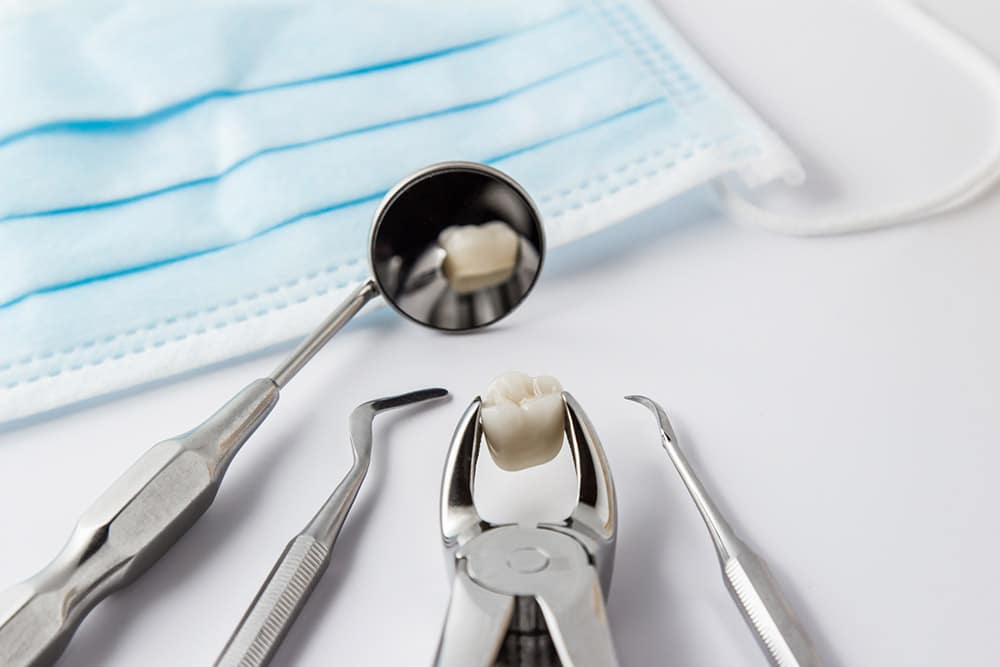
Extractions
An extraction is the process of removing a tooth or tooth parts. To perform an extraction, the area is anesthetized to minimize discomfort and the tooth is then rocked back and forth until it is removed from its socket.
Removable Prosthetics
Dentures
A denture is a removable replacement for missing teeth. There are two types of dentures, complete (full) and partial dentures.
Complete (Full) Dentures are made after all the teeth in the upper and/or lower jaw have been removed and the gum tissue has healed. The denture includes an acrylic base that is custom made in the dental laboratory and are made to look like natural gums, which sits over the gums or can be anchored to dental implants.
Removable Partial Dentures are made only when a few teeth need to be replaced. The removable partial denture either attaches to crowns on either side of the denture or to a metal framework that is attached to the teeth on both sides of the partial denture. Partial dentures can be removable or they can be anchored in place by attaching them to dental implants. Removable partial dentures can be supported in place by attaching them to dental implants when wearing them during the day.
Bonding
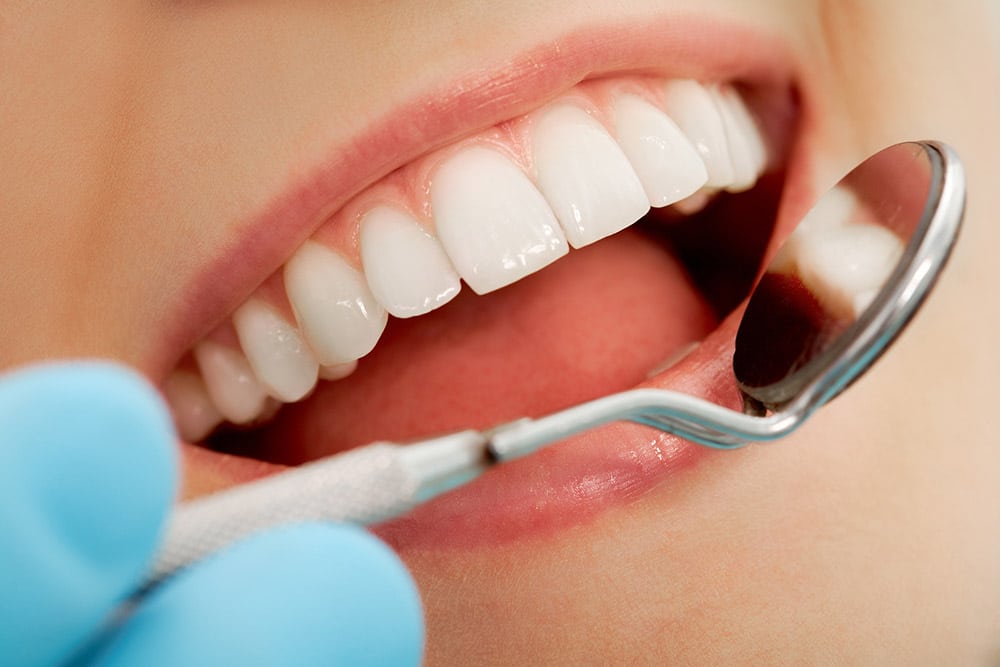
Bonding
Cosmetic bonding is the process of filling or restoring teeth with a tooth-colored material in order to maintain its natural appearance. In order to bond a tooth, tooth colored material is added to the tooth to build it up.

Veneers
Porcelain veneers are thin pieces of porcelain used to recreate the natural look of teeth. To place a veneer, a very small amount of the original tooth enamel must be removed. Afterwards, an adhesive layer is placed between the slightly prepped tooth and the veneer. The veneer is then hardened with a curing light.

In Office Whitening
Teeth whitening is the process of lightening the shade of the teeth by using safe chemical agents. In-Office Whitening usually requires only one office visit. A protective gel or a rubber shield is placed over the gums to protect the soft tissue. A bleaching agent containing carbamide peroxide is applied to the teeth, and a laser light is then used to enhance the action of the whitening agent.
Orthodontics
Invisalign
Invisalign® takes a modern approach to straightening teeth, using a custom-made series of aligners created for you and only you. These aligner trays are made of smooth, comfortable and virtually invisible plastic that you wear over your teeth. Wearing the aligners will gradually and gently shift your teeth into place, based on the exact movements your dentist or orthodontist plans out for you. There are no metal brackets to attach and no wires to tighten. You just pop in a new set of aligners approximately every two weeks, until your treatment is complete. You’ll achieve a great smile with little interference in your daily life. The best part about the whole process is that most people won’t even know you’re straightening your teeth.
Sedation Dentistry
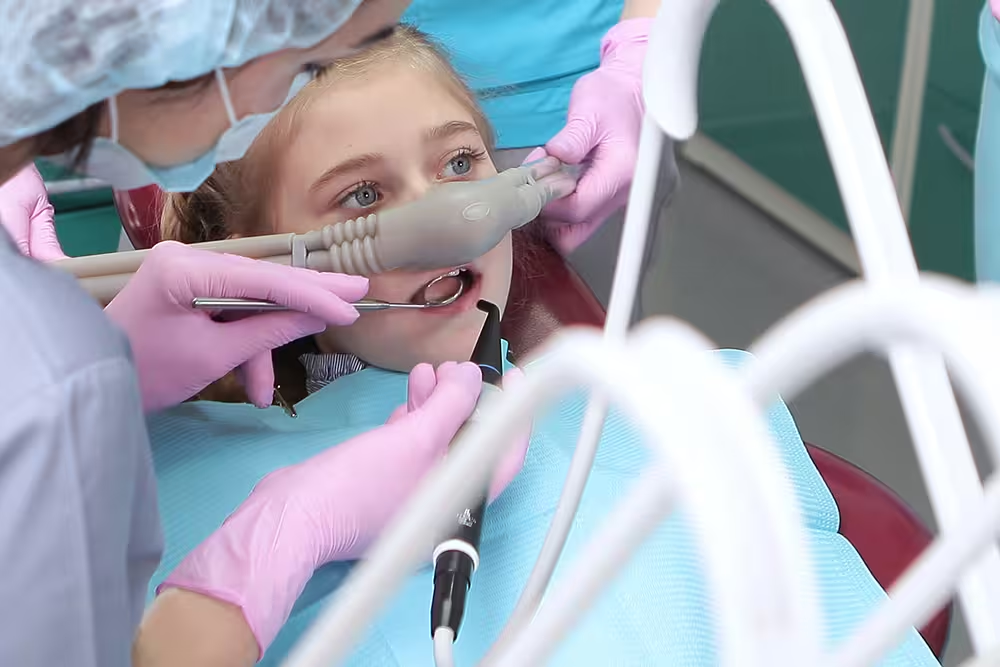
Nitrous oxide
Nitrous oxide, sometimes referred to as “laughing gas,” is an effective and safe sedation agent that is inhaled through a mask that fits over your nose to help you relax. Mixed with oxygen, Nitrous oxide allows you to breathe normally through your nose and within minutes you should start to feel the effects. You may feel light-headed or a tingling in your arms and legs. Some patients comment that their legs and arms feel heavy. Ultimately, you should feel comfortable and calm. The effects of nitrous oxide wear of quickly after the small mask is removed. Talk to the doctor about whether nitrous oxide would be a good option for you.
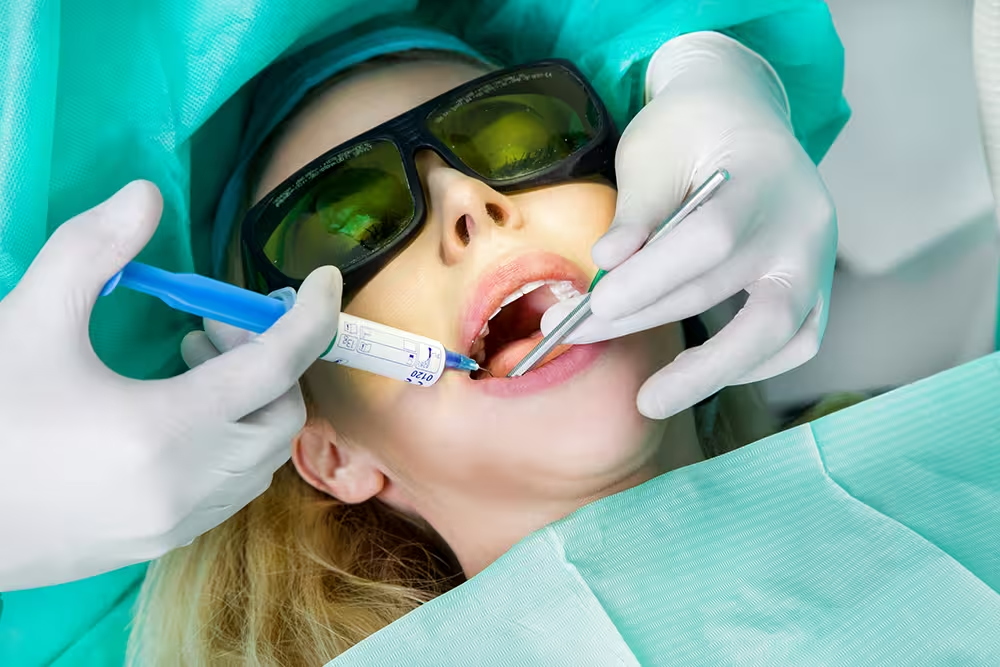
Local Anesthesia
Local anesthesia is the elimination of sensation/feeling, especially pain, in one part of the mouth by the topical application or injection of a local anesthetic drug.

